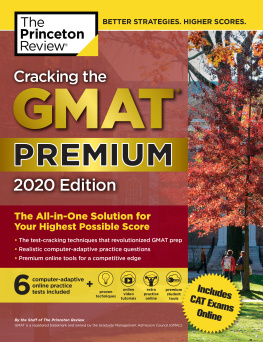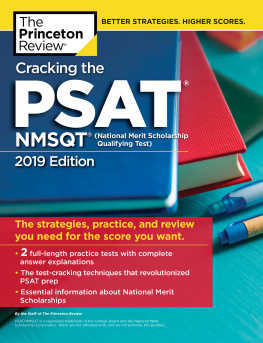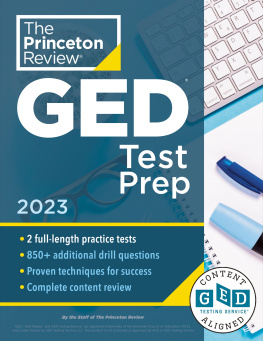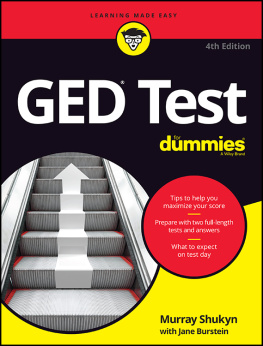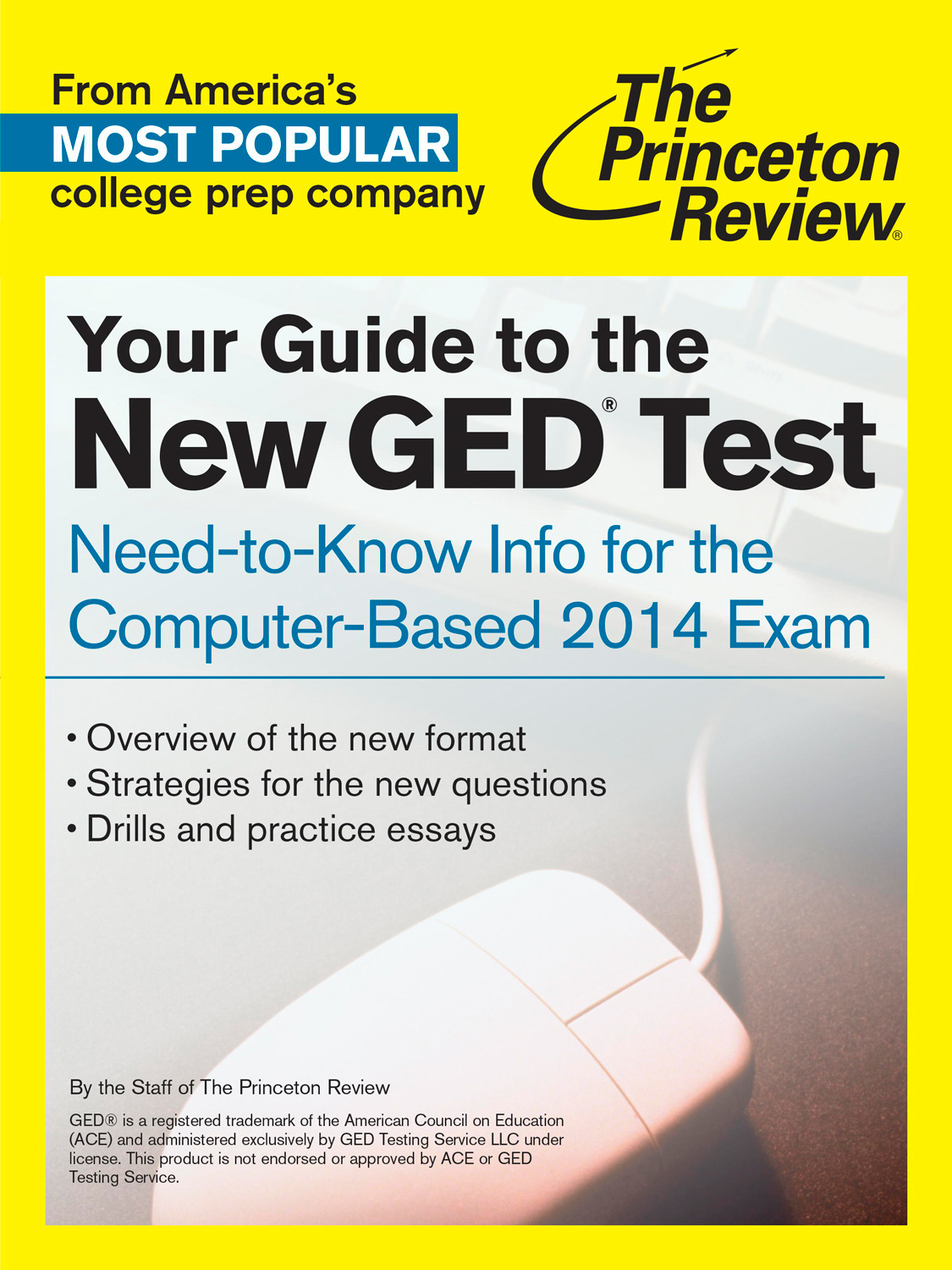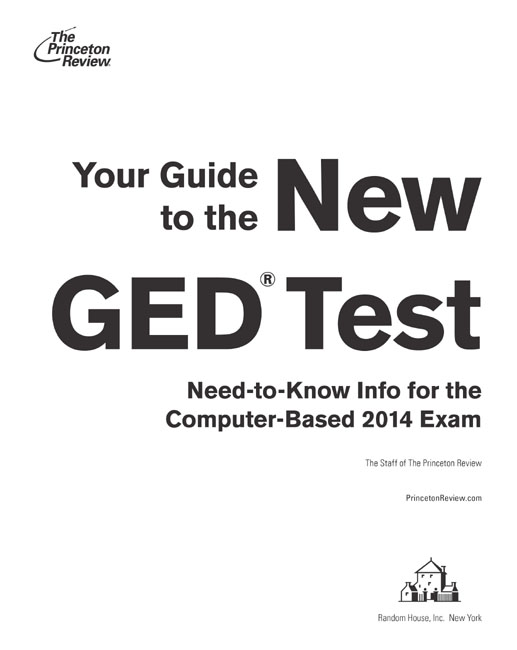

Editorial
Rob Franek, Senior VP, Publisher
Mary Beth Garrick, Director of Production
Selena Coppock, Senior Editor
Calvin Cato, Editor
Kristen OToole, Editor
Meave Shelton, Editor
Alyssa Wolff, Editorial Assistant
Random House Publishing Team
Tom Russell, Publisher
Alison Stoltzfus, Publishing Manager
Dawn Ryan, Associate Managing Editor
Ellen Reed, Production Manager
Erika Pepe, Associate Production Manager
Kristin Lindner, Production Supervisor
Andrea Lau, Designer
The Princeton Review, Inc.
111 Speen Street, Suite 550
Framingham, MA 01701
E-mail:
Copyright 2014 by TPR Education IP Holdings, LLC. All rights reserved.
Cover art Stock Connection Blue / Alamy
Published in the United States by Random House LLC, New York, and in Canada by Random House of Canada Limited, Toronto.
A Penguin Random House Company.
eBook ISBN: 978-0-8041-2474-4
GED is a registered trademark of the American Council on Education (ACE) and administered exclusively by GED Testing Service LLC under license. This eBook is not endorsed or approved by ACE or GED Testing Service.
The Princeton Review is not affiliated with Princeton University.
Editor: Meave Shelton
Production Editor: Liz Rutzel
Production Coordinator: Deborah A. Silvestrini
v3.1
Acknowledgments
The Princeton Review would like to give special thanks to Becky Robinson for her hard work researching and writing this eBook.
Contents
Chapter 1
Introduction
WHY DID THE GED TEST CHANGE?
The GED test credential is recognized as equal to a high school diploma by most colleges and employers. Since 1942, the GED test has undergone periodic changes to allow test takers to remain competitive with high school graduates. The 2014 GED test reflects the latest of these changes. Not only has the test been updated to align with Common Core state standards, it also provides an assessment of your readiness to compete in the workforce or to tackle a college-level curriculum.
WHAT ARE THE MAIN CHANGES TO THE TEST?
The content tested on the 2014 test will not differ significantly from the content tested on the old test, although some new topics have been added. However, there are changes to the organization of the sections and the types of questions asked. Whereas the old test consisted of five graded sections, the 2014 test has only four graded sections. The two Language Arts sections, Reading and Writing, have been combined to form a new, longer section called Reasoning Through Language Arts. This means that you will no longer get separate writing and reading scores and that there are now only four sections to pass in order to obtain your certificate.
The Four Sections
The length and general organization of each section is as follows:
- Reasoning Through Language Arts (150 minutes total)
1 extended-response question (45 minutes, timed separately)
1 section including various question types - Mathematical Reasoning (90 minutes)
1 section including various question types - Science (90 minutes)
1 section including various question types
Includes two short-answer questions - Social Studies (90 minutes)
1 section including various question types (65 minutes)
1 extended-response question (25 minutes)
The GED Testing Service has not specified the number of questions in each section, but it is said to be roughly equivalent to the old test.
The Computer-Based Format
Whereas the old test was primarily in a pencil-and-paper format, the 2014 GED test is computer based. You can get a good idea of the new look and feel by exploring the GED Testing Services free practice test. Be sure to check out the Computer Skills Tutorial, which will walk you through examples of different types of questions. The free practice test is not full length, but it contains each question type that you should expect to encounter on the real GED test.
New Question Types
With the exception of one essay, the questions on the old test were all multiple choice. The 2014 test uses a variety of question types. Standard multiple-choice questions still make up about 50 percent of each test section, but youll also see six new types: fill in the blank, drop-down menu, drag-and-drop, hot-spot, short answer, and extended-response questions. The purpose of these new question types is to test knowledge and understanding of the content in greater depth.
Some of the question types, such as the drop-down menu type, do not significantly differ from a multiple-choice question. However, with the exception of Mathematical Reasoning, each section now requires some form of written response. The short-answer questions in the Science section require approximately a paragraph-length response and are estimated to take 10 minutes. The Social Studies section has a 25-minute extended-response question for which you must write a short essay. And the Reasoning Through Language Arts section requires an extended, 45-minute essay. This means that you have to be able to write your own response, in some form, on each section of the test. Although it remains to be seen whether or not it is possible to pass these sections without the writing component, it is clear that a test taker must know how to think in depth and independently on the 2014 test.
In , we will explore each new question type in more detail.
WHAT IS A PASSING GRADE?
The 2014 test is scored on a completely new scale. Each of the four sections is scored from 100 to 200, and you must get a minimum score of 150 on each of the four sections in order to pass that section. However, there is no average score to pass the entire test. This means that getting a higher score on one section does not compensate for a lower score on another section. For the latest information on scoring requirements, visit GEDTestingService.com.
Is There Any Reason to Aim for Higher Than a Passing Grade?
Absolutely. Remember that the 2014 GED test also gives you feedback on a your readiness for the workforce and/or college. While achieving a score above the minimum passing requirement does not affect your certificate, it does affect these readiness indicators. Colleges and employers will have access to your readiness indicators, so it is important that you score as well as you can on the GED test. Currently, it is unclear how or when these readiness indicators will be made available, so you should keep checking the GED Testing Services website for the latest info.


